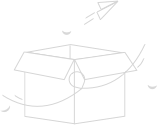-
reading4
普通类 -
- 支持
- 批判
- 提问
- 解释
- 补充
- 删除
-
-
reading4
The outer planets

Q1: What are the names of the outer planets?
Q2: What characteristics do the outer planets have?
The four outer planets, or gas giants (sometimes called Jovian planets), collectively make up 99% of the mass known to orbit the Sun. Jupiter and Saturn are each many tens of times the mass of Earth and consist overwhelmingly of hydrogen and helium; Uranus and Neptune are far less massive (<20 Earth masses) and possess more ices in their makeup. For these reasons, some astronomers suggest they belong in their own category, "ice giants". All four gas giants have rings, although only Saturn's ring system is easily observed from Earth. The term superior planet designates planets outside Earth's orbit and thus includes both the outer planets and Mars.Jupiter
Jupiter, at 318 Earth masses, is 2.5 times the mass of all the other planets put together. It is composed largely of hydrogen and helium. Jupiter's strong internal heat creates semi-permanent features in its atmosphere, such as cloud bands and the Great Red Spot.
Jupiter has 67 known satellites. The four largest, Ganymede, Callisto, Io, and Europa, show similarities to the terrestrial planets, such as volcanism and internal heating. Ganymede, the largest satellite in the Solar System, is larger than Mercury.
Saturn
Saturn, distinguished by its extensive ring system, has several similarities to Jupiter, such as its atmospheric composition and magnetosphere. Although Saturn has 60% of Jupiter's volume, it is less than a third as massive, at 95 Earth masses, making it the least dense planet in the Solar System. The rings of Saturn are made up of small ice and rock particles.
Saturn has 62 confirmed satellites; two of which, Titan and Enceladus, show signs of geological activity, though they are largely made of ice. Titan, the second-largest moon in the Solar System, is larger than Mercury and the only satellite in the Solar System with a substantial atmosphere.
Uranus
Uranus, at 14 Earth masses, is the lightest of the outer planets. Uniquely among the planets, it orbits the Sun on its side; its axial tilt is over ninety degrees to the ecliptic. It has a much colder core than the other gas giants and radiates very little heat into space.
Uranus has 27 known satellites, the largest ones being Titania, Oberon, Umbriel, Ariel, and Miranda.
Neptune
Neptune, though slightly smaller than Uranus, is more massive (equivalent to 17 Earths) and therefore more dense. It radiates more internal heat, but not as much as Jupiter or Saturn.
Neptune has 14 known satellites. The largest, Triton, is geologically active, with geysers of liquid nitrogen. Triton is the only large satellite with a retrograde orbit. Neptune is accompanied in its orbit by several minor planets, termed Neptune trojans, that are in 1:1 resonance with it.
-
-
- 标签:
- 教学
- saturn
- uranus
- planets
- known
- neptune
- earth
- outer
- solar
- jupiter
- 跨越式
- masses
-

.jpg)

学习元评论 (0条)
聪明如你,不妨在这 发表你的看法与心得 ~